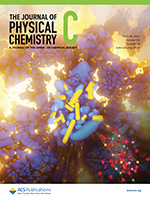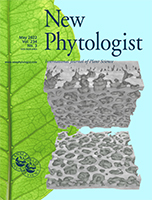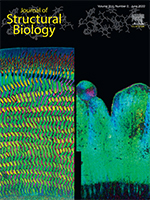Ideal bulk heterojunction morphology is critical in organic solar cells (OSCs). Here, researchers show how sequential casting improves device performance in both fullerene- and nonfullerene-based systems, in which the donor and acceptor are deposited sequentially. The film spin-coating method is analogous to the traditional Chinese pancake-making process. Read more »
Journal Covers
Ionic Conduction Mechanism and Design of Metal–Organic Framework Based Quasi-Solid-State Electrolytes
This cover image demonstrates the critical role of the solvent in the ion motion of intrinsically anionic metal–organic framework (MOF)–based quasi-solid-state electrolytes (QSSEs). Using hybrid theoretical and experimental approaches, we have identified solvent-assisted hopping as the dominant pathway for Li+ conduction in such materials, exemplified by MOF-688. Read more »
Phosphomimetic S207D Lysyl–tRNA Synthetase Binds HIV-1 5′UTR in an Open Conformation and Increases RNA Dynamics
Binding assays, RNA chemical probing, and SAXS showed that phosphomimetic S207D LysRS binds in an open conformation preferentially to dimeric HIV-1 genomic RNA. A new working model is proposed wherein a dimeric phosphorylated LysRS/tRNA complex binds to a genomic RNA dimer, facilitating tRNA primer release and placement onto the binding site. Future anti-viral strategies that prevent this interaction are envisioned. Read more »
Visualizing the Nanoscale Oxygen and Cation Transport Mechanisms during the Early Stages of Oxidation of Fe–Cr–Ni Alloy Using In Situ Atom Probe Tomography
Understanding the early stages of interactions between oxygen and material surfaces is beneficial for fields ranging from materials degradation to forensics and catalysis. In situ atom probe tomography (APT) is demonstrated to track the diffusion of oxygen and metal ions at nanoscale spatial resolution during the early stages of oxidation of a model Fe–Cr–Ni alloy. Read more »
Decoupling the metal–insulator transition temperature and hysteresis of VO2 using Ge alloying and oxygen vacancies
The VO2 metal–insulator transition underpins applications in thermochromics, neuromorphic computing, and infrared vision. Ge alloying is shown to expand the stability of the monoclinic phase to higher temperatures, and by suppressing the propensity for oxygen vacancy formation, renders the hysteresis of the transition exquisitely sensitive to oxygen stoichiometry. Read more »
Exploring Critical Synthetic Parameters for Nanoscale ε-Fe2O3 and Their Influence on Magnetic Behaviors
An intermediate polymorph of iron oxide, ε-Fe2O3, has attracted significant attention for potential applications in high-frequency mm-wave absorption and high-density magnetic recording. However, fabrication is still a challenge. Here, we identified critical reaction parameters to improve the phase purity and tested their effects. Read more »
Structural organization of the spongy mesophyll
Many leaves have two layers of photosynthetic tissue: the palisade and spongy mesophyll. The latter is not well characterized and often treated as a random assemblage of irregularly shaped cells. These results show that simple principles may govern the organization and scaling of the spongy mesophyll in many plants and demonstrate the presence of structural patterns associated with leaf function. Read more »
Enhancing the inherent catalytic activity and stability of TiO2 supported Pt single-atoms at CeOx–TiO2 interfaces
Single atoms with atomically coordinated reaction centers are considered next-generation catalysts. However, there is concern about their thermodynamic vulnerabilities and whether their inherent catalytic nature is superior compared with that of larger nanoparticles. Here, we address the two controversies by a comparative study using two catalysts. Read more »
Biomineralization: Integrating mechanism and evolutionary history
In this review, Gilbert et al. develop a model for calcium carbonate biomineralization applicable to all phyla. Their model may help elucidate the key genetic components that drive biomineralization and offers insight into the consequences of global climate change on marine organisms. Read more »
Loss of biological control of enamel mineralization in amelogenin-phosphorylation-deficient mice
Amelogenin phosphorylation plays crucial roles in controlling structural, crystallographic, mechanical, and compositional characteristics of dental enamel. Thus, loss of amelogenin phosphorylation leads to a reduction in the biological control over the enamel mineralization process. Read more »
- « Previous Page
- 1
- …
- 3
- 4
- 5
- 6
- 7
- …
- 18
- Next Page »









